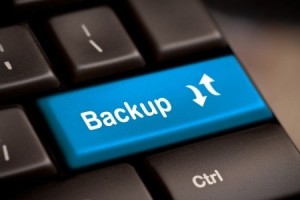
Schofield’s Law of Computing states that your data doesn’t actually exist unless you have at least two copies of it — so make sure you have a good backup system in place.
Data Backup is a fairly important thing. Whether you’re backing up your company’s entire server, or just some of the machines scattered around, having a backup of them is always a good idea.
“Why should I,” I can hear you asking through the internet “I’m sure nothing will go wrong with my computer that will make me lose my data.” Well, funny thing is, it might. Computers are rather fickle things, and are subject to tons of problems at some point or another. A lot of people, especially people who tinker with their computers, have had some form of terrible thing happen that resulted in their data going away forever.
Schofield’s Second Law of Computing states that your data doesn’t really exist unless you have at least two copies of it.
Truer words have never been spoken. Data backup is a fairly important thing to do for many reasons. I’ll list some of those below
The main reason you’ll want to do it is for disaster recovery. If your company’s main server room goes up in flames, your data is gone. If you didn’t have a backup of it somewhere, it’s really gone. Off-site backup is always useful to have in situations like this, because the server room will probably go up in flames at the same time the rest of the building does. You don’t want to be stuck having to gather all of your business’ data, as well as reconstructing your whole building.
Another reason is just in case something weird happens. Computers can mess up data on occasion, or sometimes just delete it. You would usually have some form of on-site backup if this happens, since you don’t want to have to get an employee to drive across town to pick up your tape backups from the storage facility just because your computer bugged out or because you had to re-install an operating system.
You’ll always want to have at least a few backups. There was a time where tape backups were commonplace, and they still are to an extent, but off-site BDR is become more common by the day, and it’s every bit as cheap as tapes are. It’s more convenient, as well, since you don’t have to send an employee across town to grab a tape because some jack-leg stepped on yours and your system decided some file was irrelevant.
And, for the final part of this explanation, there are 3 types of backups: full, incremental, and differential. A full backup will backup the entire system. An incremental backs up the system and marks every file that it’s backed up, ignoring those in future backups. If a file has been changed, the mark gets removed, and the next incremental backs it up and marks it again. A differential backs up all files that have changed since the last full backup.
Full backups are the easiest to use, since you only need one of them to restore. The problem with this is that it uses more disk space than the other two backups. You should do these once per week just in case something went wrong with the last one, since you’ll probably be combining these with a differential.
Incremental backups are probably the hardest to use, since you need every single incremental backup since the last full backup performed. So, if you crash on Sunday and your full backups are Monday, you have to restore your full backup, and then 5 incremental in order from oldest to newest. If you mix up two of the incremental (say Tuesday and Wednesday), then the one from Tuesday will overwrite the one from Wednesday, or just not work and you’ve just wasted your time.
With differential backups, you only need two backups to restore. You need the last differential and the last full. Most programs overwrite the oldest differential available since you don’t need it, so you’ll save space on your backup media.
We provide online backups here at SystemsNet, and you can contact us in order to set up your subscription with us.


 Most businesses have entered the online world. They’ve seen its potential and taken their services online. It’s also opened up a new category of threats. Cyber-attacks from a reasonably skilled hacker can wipe out a business in a matter of hours. It’s essential you protect yourself against the worst case scenario.
Most businesses have entered the online world. They’ve seen its potential and taken their services online. It’s also opened up a new category of threats. Cyber-attacks from a reasonably skilled hacker can wipe out a business in a matter of hours. It’s essential you protect yourself against the worst case scenario.